Extreme weather is becoming more frequent and more intense in many places because of climate change.
Scientists say this will continue whilst humans keep releasing planet-warming greenhouse gases.
Here are four ways climate change is linked to extreme weather.
1. More fuel for wildfires
Wildfires happen naturally in many parts of the world. It's difficult to know if climate change has caused a specific wildfire to spread because other factors like changes to land use are also relevant.
Greece is experiencing its worst July for wildfires on record, with fires hitting Rhodes and Corfu. Canada is also experiencing its worst wildfire season on record, with more than 25,000 acres (100,000 sq km) already burnt. This follows severe wildfires in Chile and Australia earlier in 2023.
Some regions – such as the western US – have seen an increase in the area burnt by wildfires in recent decades, but global wildfire trends are more complicated.
However, scientists say climate change is making the weather conditions needed for wildfires to spread more likely.
Extreme and long-lasting heat draws more and more moisture out of the ground and vegetation.
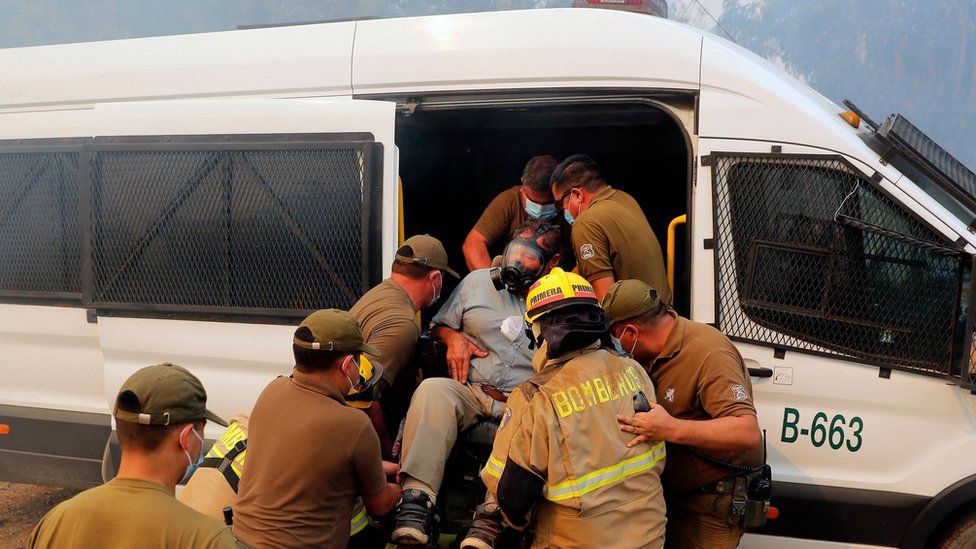 Image source, Javier Torres/AFPImage caption, Dozens of people died and were evacuated in Chile as wildfires burned across the country
Image source, Javier Torres/AFPImage caption, Dozens of people died and were evacuated in Chile as wildfires burned across the country
These tinder-dry conditions provide fuel for fires, which can spread at an incredible speed, particularly if winds are strong.
Scientists expect wildfires to become more frequent and intense in future due to the combined effects of land use and climate change.
- Rhodes rescue flights under way as fires continue
- How do wildfires start?
- Millions under smoke advisory due to Canada fires
2. Hotter, longer heatwaves
Even a small increase to average temperatures makes a big difference.
This is because the whole distribution of daily temperatures shifts to warmer levels, making hotter days more likely and more extreme.
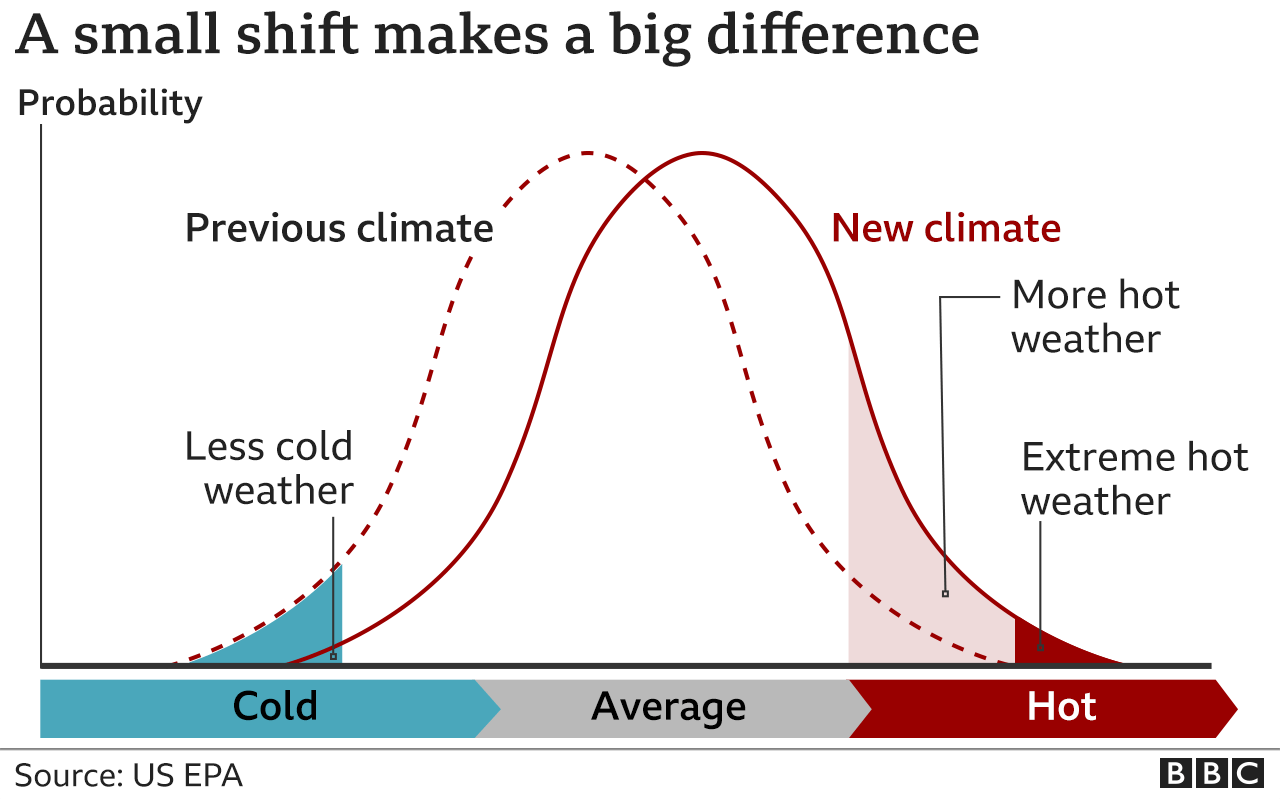
Scientists use computer simulations to judge whether extreme weather events have been made more likely by warming caused by humans.
They say the intense heatwaves that hit southern Europe and the southern US and Mexico in July 2023 would have been "virtually impossible" without human-caused climate change, according to the World Weather Attribution network (WWA).
But these events are no longer rare, the WWA warns. If global warming reaches 2C above the pre-industrial period – before humans started burning fossil fuels at scale – these events are expected to happen every 2-5 years.
In the UK, temperatures topped 40C for the first time on record in July 2022. This would have been "extremely unlikely" without climate change, the WWA says.
- Why is it so hot in the UK?
- Is the UK getting hotter?
- Life at 50 degrees
Heatwaves are also becoming longer and more intense – including in the UK.
This can happen through "heat domes" – an area of high pressure where hot air is pushed down and trapped in place, causing temperatures to soar over large areas.
One theory suggests higher temperatures in the Arctic – which has warmed more than four times faster than the global average – are causing strong winds called the jet stream to slow, increasing the likelihood of heat domes.
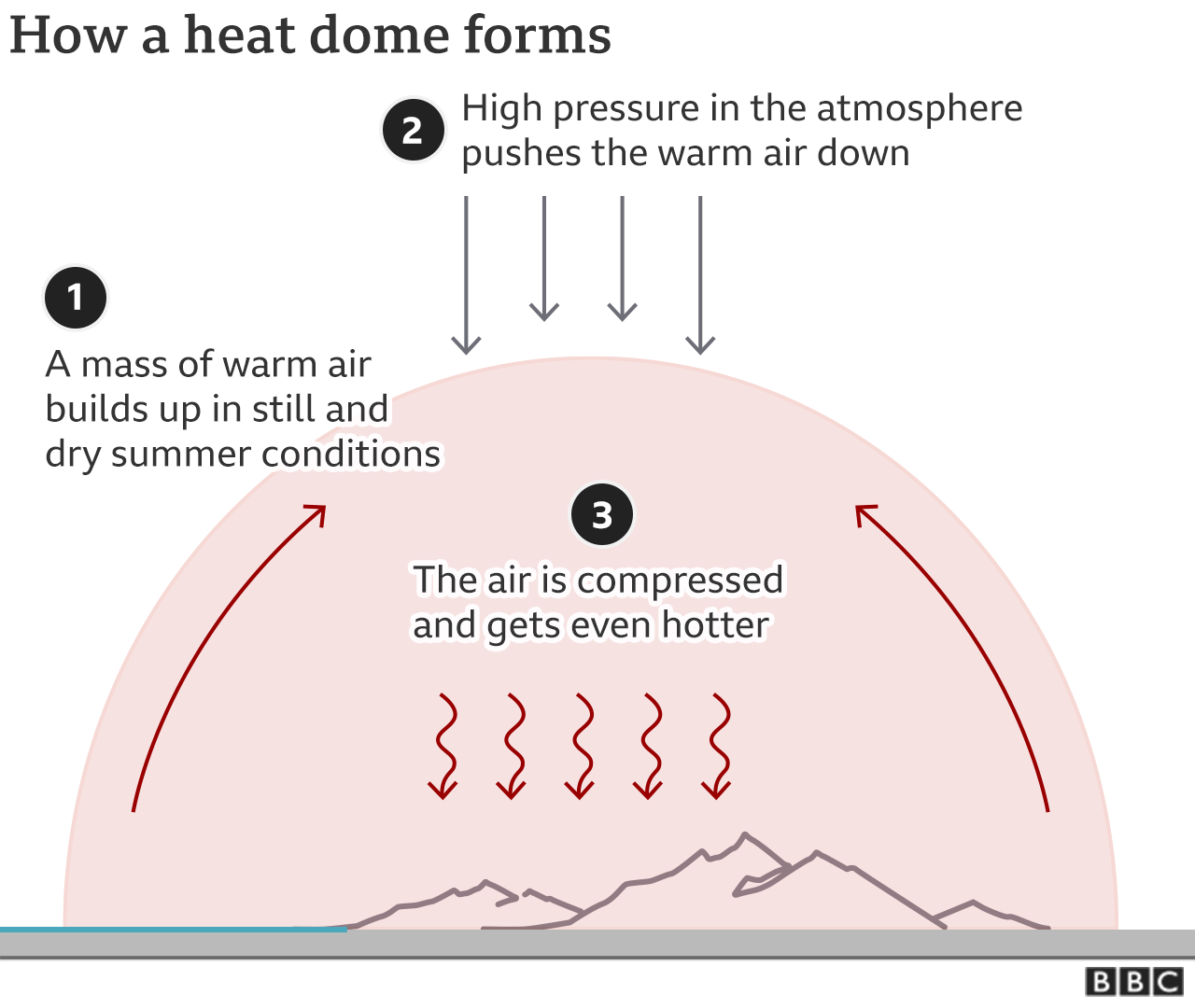
3. Longer droughts
Linking climate change and individual droughts can be difficult. The availability of water depends on more than just temperature and rainfall.
But longer and more intense heatwaves can worsen droughts by drying out soils. The air above then warms up faster, leading to more intense heat.
Increased demand for water from humans and farmers in hot weather puts even more stress on the water supply.
In parts of East Africa, there were five failed rainy seasons in a row between 2020 and 2022, leaving more than 20 million people at risk of being dangerously short of food.
Climate change has made droughts like this more than 100 times more likely, according to the WWA.
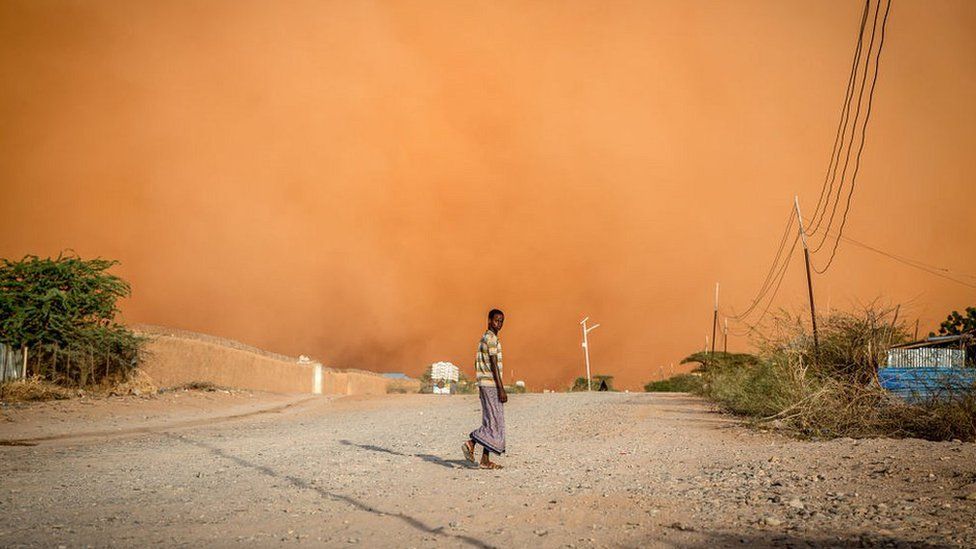 Image source, Getty ImagesImage caption, Drought in Somalia – the country has suffered five failed rainy seasons in a row
Image source, Getty ImagesImage caption, Drought in Somalia – the country has suffered five failed rainy seasons in a row
4. More extreme rain
The warmer it becomes, the more moisture the atmosphere can hold.
This results in more droplets and heavier rainfall, sometimes in a shorter space of time and over a smaller area.
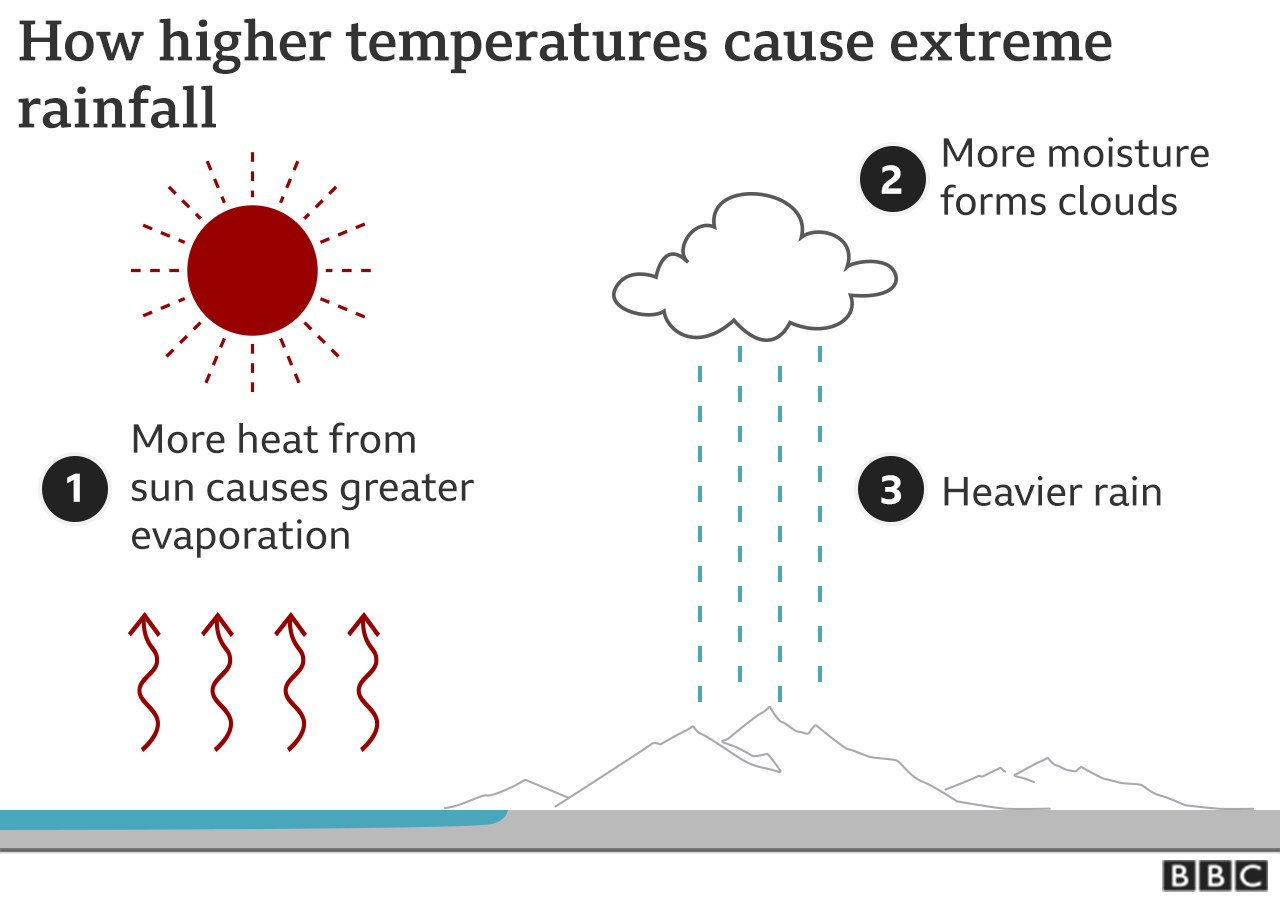
In 2022, Pakistan experienced its wettest July and August on record, triggering devastating floods affecting more than 33 million people. It is "likely" that climate change played a role, according to the WWA, but natural weather patterns like the monsoon may have been involved too.
Extreme rainfall and flooding has also hit other regions, including West Africa between May and October 2022, and New Zealand in February 2023.
Scientists cannot say for certain that they were caused by climate change, but the floods are consistent with the changes they expect in a warming world.
- A really simple guide to climate change
- How do we know climate change is caused by humans?

Greece Wildfires
Could powerful heatwaves and summer wildfires, which have devastated communities and displaced tourists in Greece, become the new normal in Europe?
Available now on BBC iPlayer (UK only)
![]()
